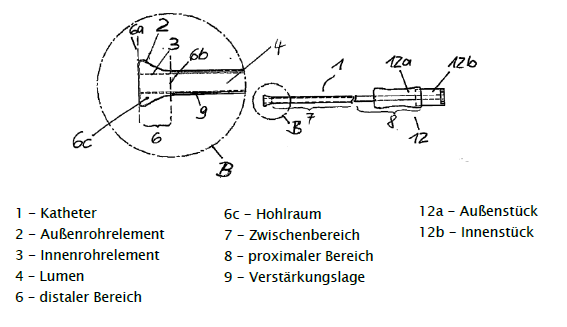Catheter
Kurzbeschreibung
The presented catheter has a tip that can be deformed and flattened when placed on a vessel. The catheter can be placed on a defined surface and fixed, which enables locally targeted treatment.
Beschreibung/Hintergrund
In the treatment of vascular diseases such as stenoses, occlusions or aneurysms, catheters are pushed through the vascular system to the site of the disease. For a treatment on a vessel wall, for example, the catheter must be placed and fixed in a defined position on the vessel wall. This can be achieved, for example, by dilating balloons or by a advancing a wire beyond the tip of the catheter. The disadvantage of this approach is that when fixing by means of balloons, via a lumen of the catheter to a defined site on the vessel wall is not possible.

Lösung
An inventor at Otto-von-Guericke-University Magdeburg has developed a catheter that enables defined placement on a vascular surface. The catheter presented consists of an outer tube element and an inner tube element, each with a distal and proximal end. The tubular elements are arranged coaxially with respect to one ach another and form an intermediate space, which has a reinforcing layer by which the catheter shaft is stiffened. Thus, depending on the embodiment, the inner or outer tubular element can be hardened, while the distal region of the catheter, which is formed as the catheter tip, remains soft and deformable. By axially displacing the inner to the outer wall, the catheter tip can be deformed and flattened when placed on a vessel. The outer tube element is thereby bulged out so that a sealing surface is formed towards the vessel and a sealing attachment of the catheter to the vessel wall is made possible. By applying a permanent vacuum, the catheter can be foxed to the vessel wall, thus preventing leakage of body fluids.